Why Apology Emails Always Win Customer Trust
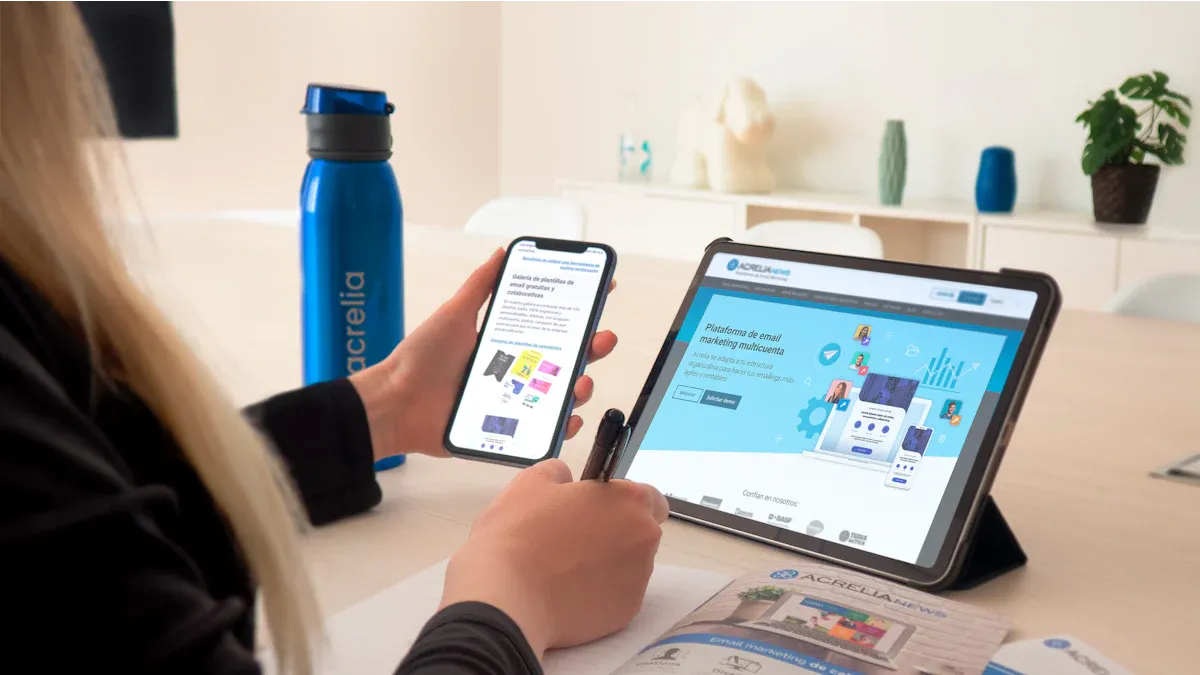
Mistakes are inevitable, even for the most successful businesses. However, the way you address those mistakes can significantly impact your customer relationships. Sending an email apologizing to a customer is more than just saying “sorry.” It’s an opportunity to demonstrate sincerity, take responsibility, and provide a solution that directly addresses their concerns. Research highlights that written apologies are highly effective in restoring trust. They enhance how customers view your integrity and competence, while also increasing their willingness to continue engaging with your brand, such as Sobot.
A well-crafted apology can transform a dissatisfied customer into a loyal advocate. By acknowledging your mistake and showcasing transparency and integrity, you communicate that you genuinely value their relationship. This thoughtful communication not only resolves the immediate issue but also strengthens long-term connections. Taking proactive steps to rebuild trust reinforces customer satisfaction and demonstrates that your business, like Sobot, truly prioritizes its customers.
Why Apology Emails Matter in Customer Service

The Role of Apology Emails in Building Trust with Customers
When a mistake happens, your response can either mend or break the relationship with your customers. Sending an apology email shows that you care about their concerns and are willing to take responsibility. Research reveals that customers are more likely to forgive brands when they’ve had positive personal experiences. This means a well-written apology email can help rebuild trust and restore confidence in your brand.
A sincere apology goes beyond just saying “sorry.” It reflects sincerity, clarity, and a genuine effort to address the issue. By acknowledging your mistake and offering a solution, you demonstrate that you value your customers’ loyalty. This simple act of apologizing to customers can make them feel heard and respected, which is essential for maintaining strong relationships.
How Apology Emails Impact Customer Retention and Loyalty
Did you know that a prompt apology email can significantly improve customer retention? When customers feel that their concerns are taken seriously, they’re more likely to stick around. Apology emails play a vital role in retaining customers after a negative experience. They also help mitigate dissatisfaction and rebuild loyalty.

Quickly addressing issues shows that you’re proactive and committed to resolving problems. For example, if a customer service error occurs, sending an email apologizing to the customer with a clear plan of action can turn a bad situation into a positive one. This approach not only resolves the immediate problem but also strengthens long-term loyalty. Tools like Sobot Live Chat can help you respond faster and more effectively, ensuring no customer feels ignored.
Turning Mistakes into Opportunities for Brand Growth
Mistakes don’t have to be the end of the road. In fact, they can be opportunities to grow your brand. Companies like Lilly Pulitzer and Adidas have shown how a professional apology can turn a negative situation into a chance to connect with customers. For instance:
| Company | Mistake Description | Apology Strategy |
|---|---|---|
| Lilly Pulitzer | Site crashed due to high traffic | Apologized with humor, thanked customers, and provided a CTA to shop again. |
| Adidas | Solemn apology for a significant mistake | Expressed genuine remorse and offered inspirational words in the apology. |
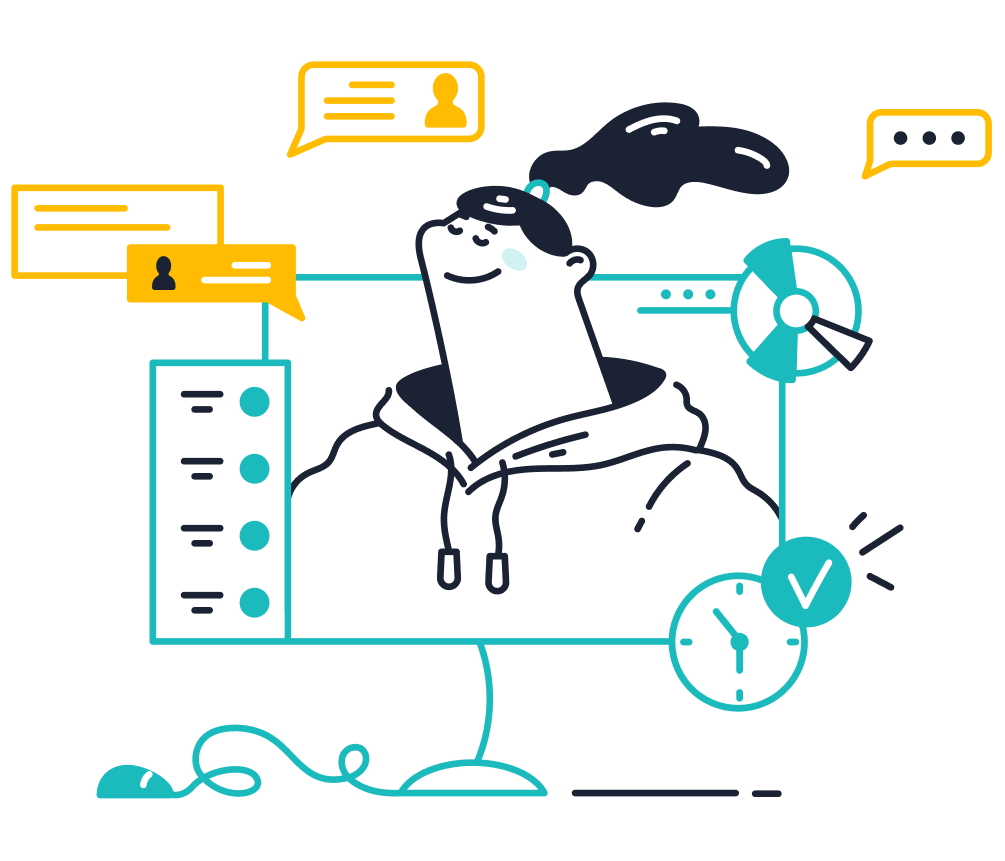
These examples highlight how owning up to errors and taking actions to rebuild broken trust can leave a lasting impression. By addressing concerns with sincerity and offering a thoughtful solution, you can turn even the angriest customers into loyal advocates. Sobot’s tools, like Live Chat, make it easier to handle such situations by providing real-time support and ensuring clarity in communication.
Key Components of an Effective Apology Email to Customers
A Clear and Sincere Apology
When you make a mistake, the first step to rebuilding trust is offering a clear and heartfelt apology. Customers want to feel that you genuinely care about their concerns. A sincere apology shows accountability and respect, which can transform a negative experience into a moment of loyalty.
Here’s why sincerity matters:
- It reestablishes trust in your professionalism.
- It reinforces the relationship with your customer.
- It demonstrates your commitment to making things right.
For example, if a product arrives damaged, a simple yet genuine statement like, “We’re truly sorry for the inconvenience caused by receiving a defective item,” can go a long way. Pairing this with a solution, such as a replacement or refund, shows you’re serious about resolving the issue. Remember, sincerity is key to crafting an effective apology that resonates with your customers.
Acknowledgment of the Issue and Its Impact on the Customer
Acknowledging the issue is just as important as apologizing. When you recognize the problem and its impact, you show empathy and understanding. This step helps customers feel heard and valued, which is essential for rebuilding trust.
For instance, if a customer experiences a delayed delivery, you might say, “We understand how frustrating it can be to wait longer than expected for your order. We deeply regret the inconvenience this has caused.” By addressing their concerns directly, you demonstrate that you’re taking their dissatisfaction seriously.
Acknowledgment also opens the door to reconciliation. Offering compensation, like loyalty points or discounts, can further enhance satisfaction. Additionally, showing your commitment to improvement—such as conducting regular audits to prevent future issues—helps rebuild trust and strengthens your relationship with the customer.
Explanation of What Went Wrong (Without Making Excuses)
Transparency is crucial in an apology email. Customers appreciate when you explain what went wrong, as long as it doesn’t come across as an excuse. This step shows that you’ve identified the root cause and are taking steps to prevent it from happening again.
For example, if a technical glitch caused a billing error, you could say, “Due to an unexpected system error, some transactions were processed incorrectly. We’ve identified the issue and are implementing updates to ensure this doesn’t happen in the future.” This approach not only clarifies the situation but also reassures customers that you’re actively working on a solution.
Avoid vague statements like, “We’re sorry for the inconvenience.” Instead, be specific and honest. Customers value clarity and accountability, which are the hallmarks of an effective apology. Tools like Sobot Live Chat can help you gather real-time feedback and address concerns promptly, ensuring your explanation feels personal and genuine.
A Plan for Resolution or Compensation
When a mistake happens, customers want more than just an apology. They need to see a clear plan for how you’ll make things right. Offering a resolution or compensation shows that you’re serious about fixing the issue and restoring their trust.
Start by addressing the customer’s concerns directly. For example, if a product arrives damaged, you could offer a replacement or refund immediately. If a service disruption occurs, providing a discount or free upgrade can help ease their frustration. These actions demonstrate your sincerity and commitment to customer satisfaction.
Here’s what makes a resolution effective:
- Timeliness: Respond quickly to show you value the customer’s time.
- Clarity: Clearly outline the steps you’re taking to resolve the issue.
- Fairness: Ensure the compensation matches the inconvenience caused.

For instance, Sobot Live Chat can help you streamline this process by enabling real-time communication with customers. You can quickly gather feedback, offer solutions, and ensure they feel heard. This immediate response not only resolves the problem but also strengthens your relationship with the customer.
A thoughtful resolution doesn’t just fix the mistake—it turns a negative experience into a positive one. Customers appreciate when you go the extra mile to make things right, and they’re more likely to remain loyal to your brand.
A Commitment to Prevent Future Issues
An apology email to customers isn’t complete without a promise to prevent similar mistakes in the future. This step reassures customers that you’ve learned from the situation and are taking proactive measures to improve.
Here’s how you can build trust through your commitment:
- Take Responsibility: Show transparency by owning up to the mistake.
- Outline Preventive Steps: Share the actions you’re taking to ensure it doesn’t happen again.
- Maintain Long-Term Relationships: Assure customers that their concerns are driving your improvements.
For example, you might say, “We’ve updated our system to prevent billing errors and will conduct regular audits to ensure accuracy.” This approach demonstrates integrity and helps rebuild trust.
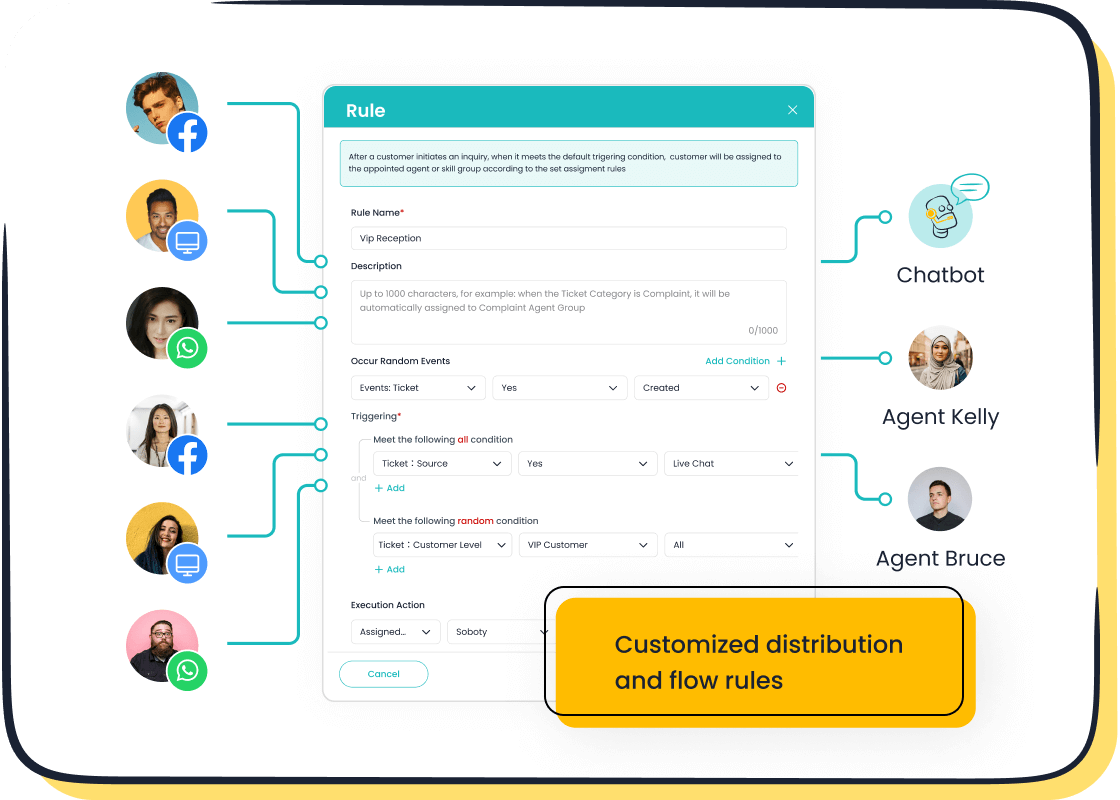
Sobot’s AI-powered tools, like Live Chat and Chatbot, can play a key role in preventing future issues. These solutions allow you to monitor customer interactions, identify recurring problems, and implement fixes before they escalate. With features like built-in analytics and intelligent assignment, you can optimize workflows and reduce errors.
Customers value brands that learn from their mistakes and take steps to improve. By showing your commitment to better service, you not only resolve the immediate concerns but also foster long-term satisfaction and loyalty.
How to Make Apology Emails Customer-Friendly with Sobot Live Chat
Using Empathetic and Human-Centric Language
Empathy is the cornerstone of any effective apology. When you step into your customer’s shoes and validate their feelings, you show that their concerns truly matter. Customers don’t just want a solution—they want to feel understood. Using empathetic and human-centric language in your email apologizing to a customer can make all the difference.
Here’s how empathy improves customer interactions:
- It builds trust by showing you genuinely care about their experience.
- It validates their concerns, making them feel heard and respected.
- It fosters a stronger connection, turning a negative moment into a positive one.
For example, instead of saying, “We’re sorry for the inconvenience,” try, “We understand how frustrating it must have been to experience this issue, and we deeply regret the mistake.” This small change in language can significantly improve how customers perceive your apology.
Sobot Live Chat can help you craft empathetic responses in real time. Its AI-assisted tools analyze customer sentiment, suggesting supportive phrases that resonate with their emotions. By using these tools, you can ensure every interaction feels personal and genuine, even during challenging situations.
Tip: Always acknowledge the customer’s feelings before offering a solution. This approach shows you value their perspective and are committed to resolving their concerns.
Personalizing the Email for Each Customer
A generic apology email can feel cold and impersonal. Personalization, on the other hand, shows that you’ve taken the time to address the customer’s unique situation. It’s a simple yet powerful way to make your apology more effective.
Start by using the customer’s name and referencing specific details about their issue. For instance, instead of saying, “We’re sorry for the delay,” you could write, “Hi Sarah, we’re truly sorry that your order #12345 didn’t arrive on time. We understand how important it was for you to receive it promptly.” This level of detail makes the apology feel tailored and sincere.
Sobot Live Chat makes personalization effortless. Its unified workspace consolidates customer data, including past interactions and preferences, into one platform. This allows you to quickly access relevant information and craft a personalized response. Additionally, features like intelligent assignment ensure that the right agent handles the conversation, further enhancing the customer experience.
Note: Personalization isn’t just about using names—it’s about addressing the specific concerns and emotions of each customer.
Keeping the Tone Professional Yet Warm
Striking the right tone in an apology email is crucial. You want to sound professional to maintain credibility, but a warm and friendly tone helps build rapport. Customers appreciate when you communicate with sincerity and approachability.
Here’s how to achieve this balance:
- Use simple, conversational language: Avoid jargon or overly formal phrases. Instead of “We regret any inconvenience caused,” say, “We’re really sorry for the trouble this caused.”
- Show humility: Phrases like “We take full responsibility” or “We’re committed to making this right” demonstrate accountability.
- End on a positive note: Reassure the customer that you’re taking steps to prevent future issues.
Sobot Live Chat can help you maintain this tone consistently. Its AI-powered tools suggest language that aligns with your brand voice while keeping the conversation warm and empathetic. With features like auto-translation and rich messaging options, you can ensure your tone remains professional yet approachable, even across different languages and platforms.
Tip: Always read your email aloud before sending it. If it doesn’t sound like something you’d say in a face-to-face conversation, consider revising it.
Ensuring the Email is Easy to Read and Understand
When writing an apology email, clarity is your best friend. Customers don’t want to sift through long paragraphs or overly technical language to understand your message. They want a straightforward explanation of the mistake, an effective apology, and a clear solution.
Here’s how you can make your email easy to read:
-
Use Short Sentences: Break down complex ideas into bite-sized pieces. For example, instead of saying, “We deeply regret the inconvenience caused by the unexpected delay in your order delivery,” try, “We’re sorry your order was delayed. We’re working to fix this.”
-
Organize with Bullet Points: If you’re explaining multiple steps or offering options, use bullet points to make the information digestible. For instance:
- What happened: A technical error delayed your order.
- What we’re doing: We’ve fixed the issue and expedited your shipment.
- What’s next: You’ll receive your order by [date].
-
Keep Paragraphs Short: Stick to one or two sentences per paragraph. This helps customers skim the email quickly without missing key details.
-
Use Headers and Subheaders: Divide your email into sections like “What Happened” and “How We’re Fixing It.” This structure makes it easier for customers to follow along.
-
Avoid Jargon: Use simple, everyday language. Instead of saying, “We’re implementing a comprehensive resolution strategy,” say, “We’re fixing the problem and making sure it doesn’t happen again.”
Sobot Live Chat can help you refine your email’s readability. Its built-in analytics evaluate customer sentiment, helping you craft messages that resonate. Plus, features like auto-translation ensure your apology emails are clear and accessible, even for international customers.
Tip: Before sending your email, read it aloud. If it sounds confusing or overly formal, simplify it.
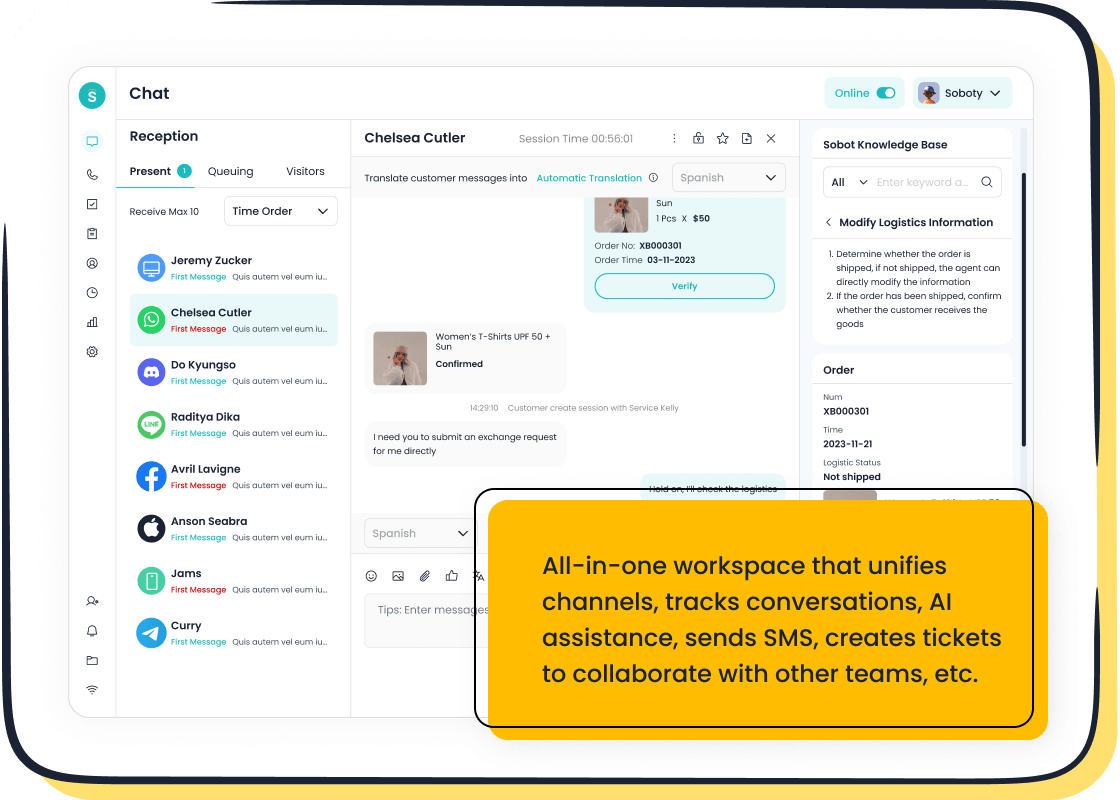
Leveraging Sobot Live Chat for Real-Time Customer Support
Sometimes, an apology email isn’t enough. Customers may have follow-up concerns or need immediate clarification. That’s where real-time support comes in. Sobot Live Chat offers a seamless way to connect with customers and address their concerns instantly.
Here’s how Sobot Live Chat enhances your apology process:
-
Instant Communication: Customers don’t want to wait days for a response. With Sobot Live Chat, you can provide real-time answers to their questions, ensuring they feel heard and valued.
-
Unified Workspace: Sobot Live Chat consolidates all customer interactions into one platform. This means you can reference past conversations while addressing current concerns, making your responses more personalized and effective.
-
AI-Assisted Tools: The platform’s AI tools suggest empathetic phrases and solutions based on customer sentiment. For example, if a customer expresses frustration, the system might recommend saying, “We understand how upsetting this must be, and we’re here to make it right.”
-
Customer Segmentation: Not all customers have the same needs. Sobot Live Chat lets you segment customers based on their preferences or issues, ensuring your apology feels tailored to their situation.
-
Built-In Analytics: Use data insights to identify recurring mistakes and improve your processes. For instance, if multiple customers report delayed deliveries, you can implement preventive measures and reassure them in your apology emails.
Samsung’s success story highlights the power of Sobot Live Chat. By integrating this tool, Samsung improved agent efficiency by 30% and achieved a 97% customer satisfaction rate. This shows how real-time support can turn a negative experience into a positive one.
Note: Pair your apology email with a live chat option. This combination ensures customers feel supported every step of the way.
Common Mistakes to Avoid When Apologizing to Customers
Being Vague or Impersonal in the Apology
A vague or impersonal apology can do more harm than good. When you fail to address the specific issue or use robotic language, customers feel undervalued. They might think you’re treating them as just another ticket number instead of a person with real concerns. This approach erodes trust and makes your apology far less effective.
Here’s a quick look at how these pitfalls impact customer relationships:
| Pitfall | Impact |
|---|---|
| Vague or incomplete answers | Forces customers to write follow-up emails, increasing frustration and diminishing trust. |
| Impersonal or robotic language | Devalues customers, treating them as ticket numbers, undermining trust and emotional connection. |
| Failing to acknowledge issues | Prevents rapport building, making customers less receptive to solutions and eroding trust. |
To avoid this, always personalize your apology. Use the customer’s name and reference their specific issue. For example, instead of saying, “We’re sorry for the inconvenience,” try, “Hi Alex, we’re truly sorry for the delay in delivering your order. We understand how important it was for you to receive it on time.” This small effort can make your apology much more effective.
Overusing Automated Responses Without Personalization
Automation can save time, but overusing it in apology emails can backfire. Customers can easily spot generic responses, and these often feel insincere. When your apology lacks a human touch, it fails to address the customer’s concerns effectively. This makes them feel ignored and less likely to trust your brand.
Instead, use automation wisely. Tools like Sobot Live Chat can help you gather customer data and craft personalized responses. For instance, if a customer reports a billing error, your email should specifically address their issue and offer a clear solution. A personalized apology shows that you’ve taken the time to understand their problem, which builds trust and strengthens your relationship.
Failing to Take Responsibility for the Mistake
Nothing frustrates customers more than an apology that shifts blame or avoids responsibility. If you don’t own up to the mistake, your apology will feel hollow. Customers want to see accountability and a genuine effort to make things right.
For example, instead of saying, “We’re sorry for the inconvenience caused by unforeseen circumstances,” say, “We’re sorry for the billing error on your account. This was our mistake, and we’re taking steps to ensure it doesn’t happen again.” Taking responsibility shows integrity and reassures customers that you’re committed to resolving the issue.
An effective apology isn’t just about saying sorry. It’s about addressing the customer’s concerns, offering a solution, and showing that you’ve learned from the mistake. By avoiding these common pitfalls, you can turn a negative experience into an opportunity to build trust and loyalty.
Offering No Real Solution or Compensation
When you apologize to a customer, they expect more than just words. If your apology doesn’t include a real solution, it can feel empty and insincere. Customers want to see that you’re taking action to fix the mistake and prevent it from happening again. Without this, your apology loses its impact.
Imagine this: a customer receives a damaged product. You send an email saying, “We’re sorry for the inconvenience,” but you don’t offer a replacement or refund. How would they feel? Likely frustrated and undervalued. An effective apology always includes a clear plan to resolve the issue. Whether it’s a refund, a replacement, or a discount, showing that you care about their concerns builds trust.
Here’s how you can make your apology more effective:
- Be specific: Clearly explain how you’ll fix the problem.
- Act quickly: Don’t make customers wait for a resolution.
- Offer fair compensation: Match the solution to the inconvenience caused.
For example, if a billing error occurs, you could say, “We’ve corrected the mistake and refunded the extra charge. We’ve also added a $10 credit to your account as an apology.” This approach shows accountability and reassures the customer that you value their experience.
Delaying the Apology Email and Losing Customer Trust
Timing is everything when it comes to an apology. If you wait too long to address a mistake, you risk losing the customer’s trust. Delays make customers feel ignored, which can escalate their frustration. A prompt apology shows that you take their concerns seriously.
Think about it. If a customer reports an issue and doesn’t hear back for days, they might assume you don’t care. This can damage your reputation and push them toward competitors. On the other hand, a quick response demonstrates that you’re proactive and committed to resolving problems.
Here’s how to avoid delays:
- Acknowledge the issue immediately: Even if you don’t have a full solution yet, let the customer know you’re working on it.
- Use tools like Sobot Live Chat: Real-time communication helps you respond faster and keep customers informed.
- Set clear timelines: Let customers know when they can expect a resolution.
For instance, you could say, “We’re sorry for the delay in your order. We’re investigating the issue and will update you within 24 hours.” This reassures the customer that you’re actively addressing their concerns.
A timely apology can turn a negative experience into a positive one. It shows that you value the customer’s time and are committed to making things right.
Examples of Customer-Friendly Apology Emails
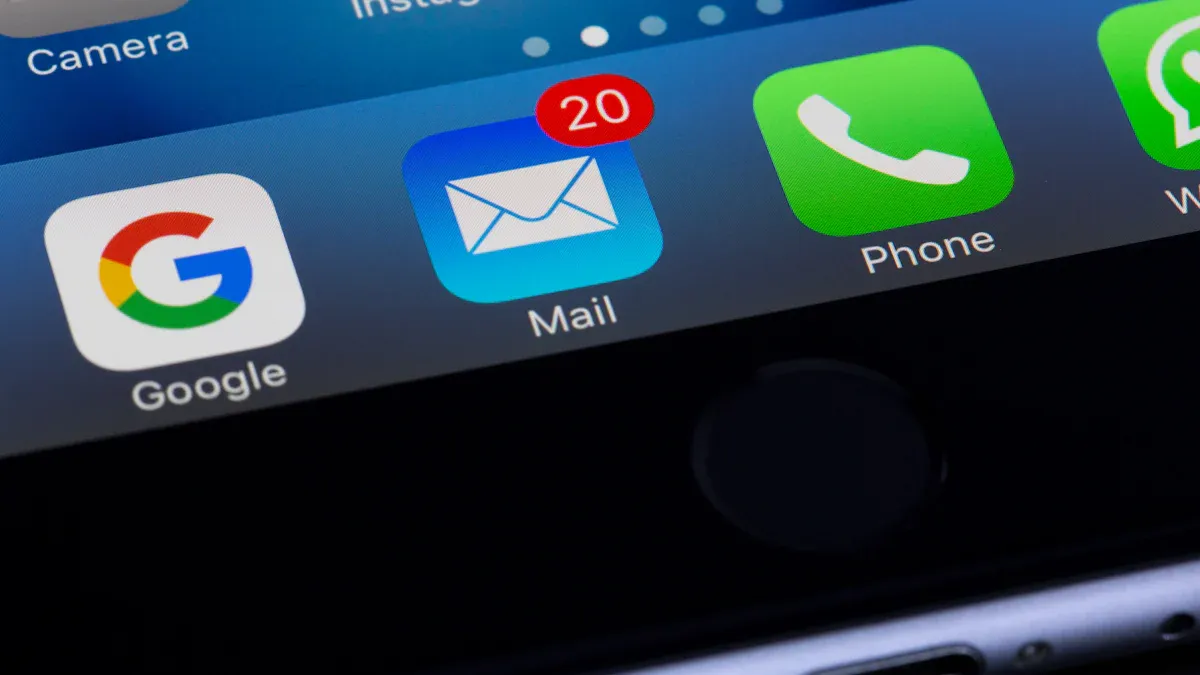
Example 1: Apology for a Late Delivery
When a delivery arrives late, customers often feel frustrated. A thoughtful apology can ease their concerns and rebuild trust. Here's an example of how you can address this situation:
Subject Line: We’re Sorry for the Delay in Your Delivery
Body:
Hi [Customer Name],We’re truly sorry your order didn’t arrive on time. We understand how important it was for you to receive it promptly. Unfortunately, due to [specific reason, e.g., unexpected shipping delays], your delivery was delayed.
To make it right, we’ve expedited your order and added a $10 credit to your account for the inconvenience. You can expect your package by [new delivery date].
Thank you for your patience and understanding. We’re taking steps to ensure this doesn’t happen again.
Best regards,
[Your Company Name]
This type of effective apology shows accountability, offers a resolution, and reassures the customer that you value their experience.
Example 2: Apology for a Billing Error
Billing errors can cause confusion and stress. A clear and effective apology can help resolve the issue and restore confidence in your brand. Here’s an example:
Subject Line: Our Apologies for the Billing Error
Body:
Hi [Customer Name],We owe you an apology. Due to a system error, an incorrect charge appeared on your account. We’ve already corrected the mistake and refunded the extra amount.
We understand how frustrating this must have been. To prevent this from happening again, we’ve updated our billing system and will conduct regular audits. As a token of our apology, we’ve added a 10% discount to your next purchase.
Please don’t hesitate to reach out if you have any questions. We’re here to help.
Sincerely,
[Your Company Name]
This approach combines sincerity, a clear explanation, and a resolution, making it an effective apology.
Example 3: Apology for a Technical Glitch
Technical glitches can disrupt your customers’ experience. A well-crafted apology can turn the situation around. Here’s an example:
Subject Line: We’re Sorry for the Technical Issue
Body:
Hi [Customer Name],We’re sorry for the inconvenience caused by the recent technical glitch on our platform. The issue occurred due to [specific reason, e.g., a server update], which temporarily affected [specific service].
We’ve resolved the problem and taken steps to ensure it doesn’t happen again. We understand how this may have impacted your experience, and we deeply regret the mistake. To make up for it, we’re offering you [specific compensation, e.g., one month of free service].
Thank you for your understanding. If you have any further concerns, please feel free to contact us.
Warm regards,
[Your Company Name]
According to customer service metrics, pairing an apology with an empathy statement and a clear resolution enhances trust. This example follows those principles, ensuring the customer feels valued.
Example 4: Apology for Poor Customer Service
Poor customer service can leave a lasting negative impression. When this happens, a thoughtful and effective apology can help repair the relationship. Here’s an example of how you might address this situation:
Subject Line: We’re Sorry for Falling Short on Your Expectations
Body:
Hi [Customer Name],We’re truly sorry for the poor experience you had with our customer service. We understand how frustrating it must have been to feel that your concerns weren’t addressed properly. This was a mistake on our part, and we take full responsibility.
To make things right, we’ve reviewed your case and taken steps to ensure this doesn’t happen again. We’ve also added [specific compensation, e.g., a $20 credit] to your account as an apology.
Your feedback is invaluable to us, and we’re committed to improving. If there’s anything else we can do, please don’t hesitate to reach out.
Sincerely,
[Your Company Name]
This type of apology shows accountability and empathy. It also reassures the customer that you’re taking their concerns seriously and working to prevent future issues.
Example 5: How Sobot Live Chat Can Help Streamline Apology Emails
Crafting an effective apology email can be challenging, especially when you’re dealing with multiple customer concerns. That’s where Sobot Live Chat comes in. This tool simplifies the process and ensures your apologies are timely, personalized, and impactful.
Here’s how Sobot Live Chat can help:
- Real-Time Feedback: You can gather customer input instantly, helping you understand their concerns better.
- Personalized Responses: The platform consolidates customer data, allowing you to tailor your apology to their specific situation.
- AI Assistance: Sobot’s AI tools suggest empathetic phrases and solutions, making your apology more effective.
- Faster Resolutions: With features like intelligent assignment, you can quickly connect customers to the right agent, ensuring their concerns are addressed promptly.
- Built-In Analytics: Use data insights to identify recurring issues and improve your processes, reducing the need for future apologies.
For example, if a customer reports poor service, Sobot Live Chat can help you respond immediately with a personalized apology. You can reference their previous interactions, offer a solution, and even follow up to ensure their satisfaction. This level of care not only resolves the issue but also strengthens your relationship with the customer.
Tip: Pair your apology emails with Sobot Live Chat for a seamless customer experience. Real-time support combined with a thoughtful apology can turn a negative situation into a positive one.
Apology emails are your secret weapon for building trust and loyalty. A truly effective apology doesn’t just say “sorry.” It addresses the customer’s concerns, offers a solution, and shows you’ve learned from the mistake. By avoiding common pitfalls and using tools like Sobot Live Chat, you can turn a negative experience into a positive one. Remember, a heartfelt apology leaves a lasting impression and strengthens your relationship with every customer.
FAQ
### 1. Why are apology emails so important for customer trust?
Apology emails show customers you care about their concerns. They help rebuild trust by addressing mistakes directly and offering solutions. A sincere apology makes customers feel valued and respected, which strengthens your relationship and encourages loyalty.
2. How can Sobot Live Chat improve my apology emails?
Sobot Live Chat helps you personalize your emails by consolidating customer data. It also suggests empathetic phrases and provides real-time feedback. These features make your apologies more effective and ensure customers feel heard and valued.
3. What’s the best way to apologize for a delayed delivery?
Acknowledge the delay and its impact on the customer. Offer a clear explanation and a resolution, like expedited shipping or a discount. For example, “We’re sorry for the delay. Your order will arrive by [date], and we’ve added a $10 credit to your account.”
4. How quickly should I send an apology email?
Send your apology as soon as possible. A quick response shows you take the issue seriously and value the customer’s time. Even if you don’t have a full solution yet, let them know you’re working on it.
5. Can apology emails really turn unhappy customers into loyal ones?
Yes! A thoughtful apology shows accountability and care. When you address concerns sincerely and offer a resolution, customers often appreciate the effort. This can turn a negative experience into a positive one, building stronger loyalty.
See Also
Enhancing Customer Satisfaction Through Effective Live Chat Strategies
Comparative Analysis of Leading Voice of Customer Tools
Best Customer Service Software Options for 2024 Revealed
Increasing E-commerce Customer Satisfaction with Chatbot Solutions
